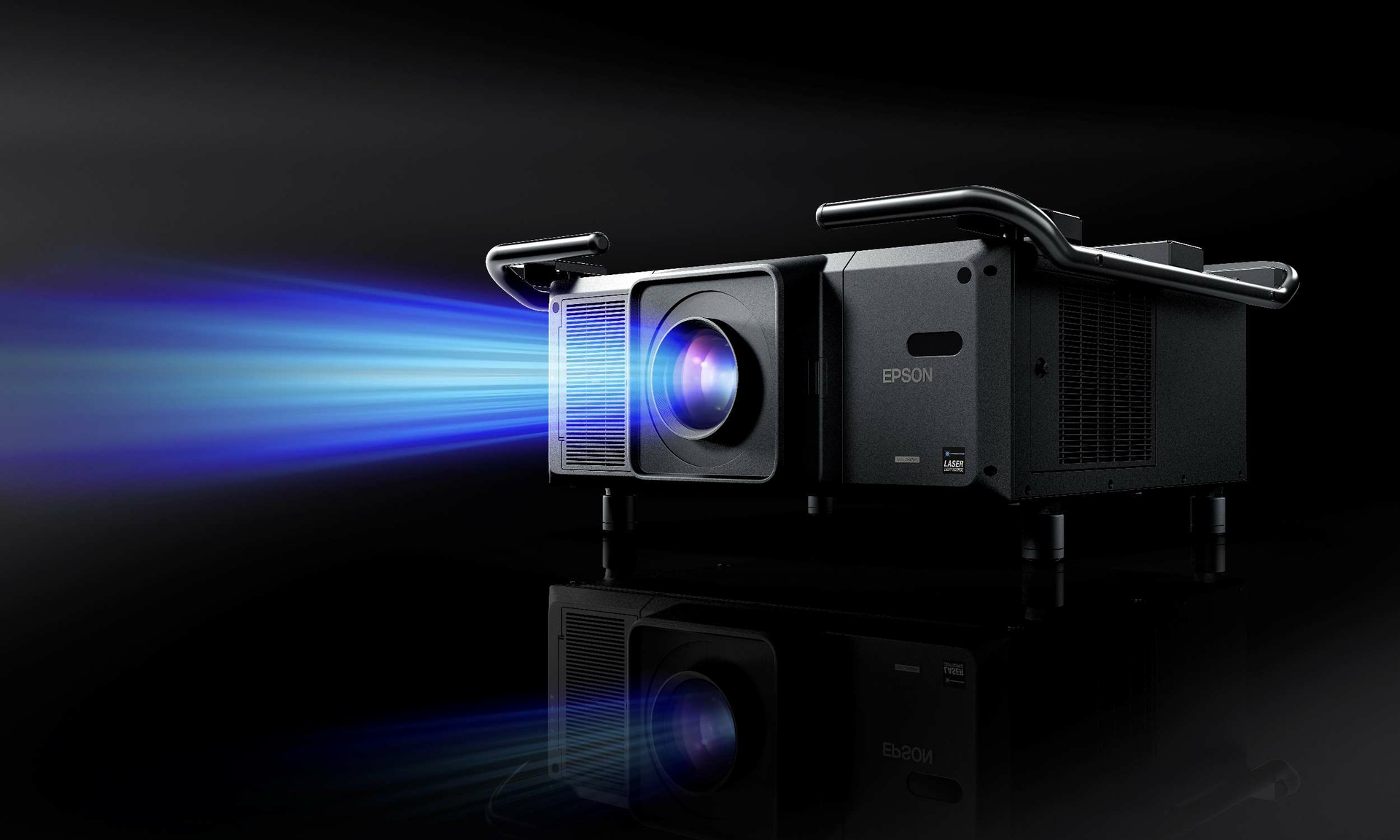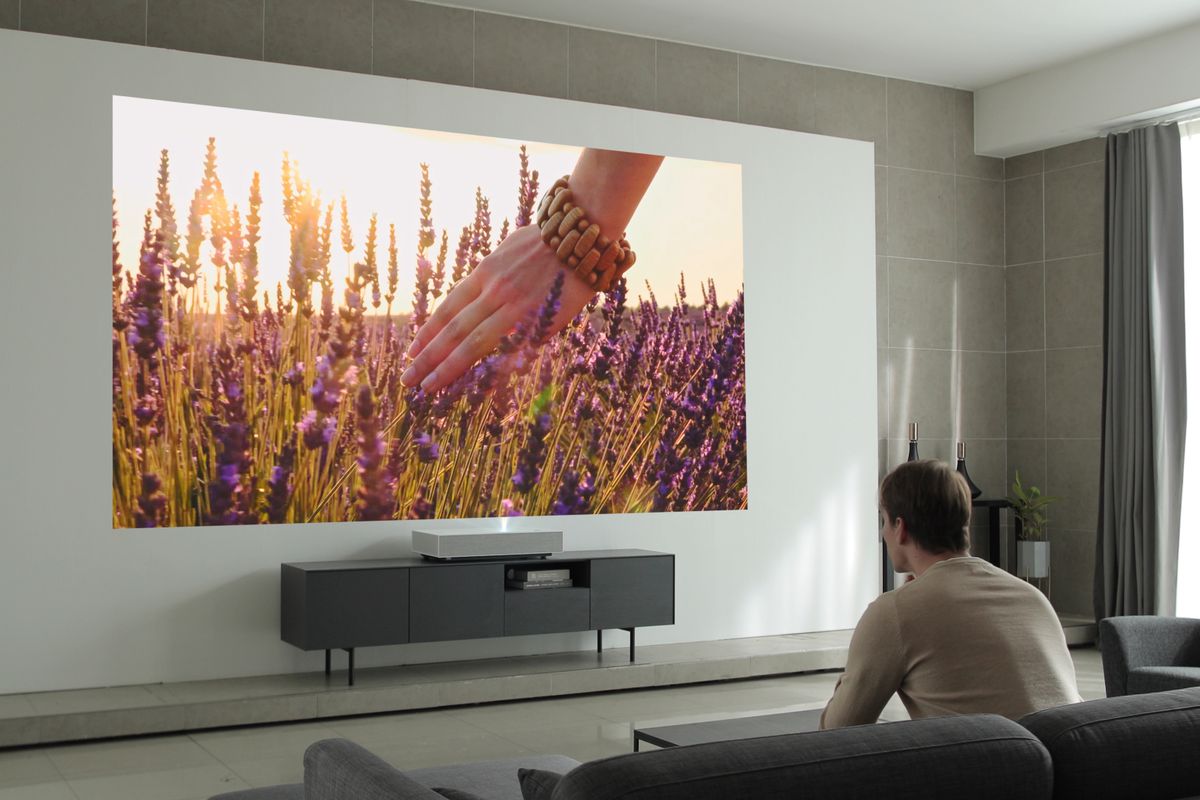Lasers are increasingly being used to create light in projectors. What was once considered sci-fi is now being utilized to generate some of the most impressive big-screen imagery. Lasers outlast traditional projector lights, are less fragile, and switch on and off practically immediately. Because of these benefits, lasers are expected to be the next big thing in projection. We will teach you how do laser projectors work in this post. Let’s get started.
Projectors enable you to see the clearest, most realistic pictures possible. Indeed, you can get a 70-inch TV these days, but projection panels in the house are frequently 100 inches or larger and are even more incredible to see in reality. One of the main motives to pay to see a movie in a cinema is the sheer enormity of the screen. Lasers were used to create that picture, and lasers may give you the movie experience you get in theaters at your home itself.
How Do Laser Projectors Work
Laser projectors utilize CAD model data to produce a sequence of points, which are then used by the projector to form an outline of the project on a three-dimensional surface. A mix of modern optics, high-precision mirrors, and galvanometers may be used to “draw” the projected picture onto the surface.
In order to produce high-quality projections, the laser projector utilizes mirrors in conjunction with the laser source. More than one line/shape is created with the laser light by spinning these mirrors at a high frequency while performing rotational motions with the mirrors.
This may be as basic as circles and lines in 2D. The laser projector can display the required projection on the target surface by putting digital designs into the laser projector. Another option involves connecting the projector to a PLC and controlling the projection via the PLC’s programming language.
While straight radiation into the eyes might be regarded as unsafe while using the 3R Class, reflections should never be considered dangerous when using the class under typical settings. It is protected from direct viewing by a built-in security system, which prevents users and anyone in the area of the laser projector from looking directly into it.
Different Uses of Laser Projectors
Application in the textile industry
The laser projector is handy for stitching, needlework, cutting, and trimming textiles! The projection lasers for the textile and leather industries streamline workflows, accelerate production, and increase product quality while lowering costs.
When cutting designs from leather using a cutter, the material cannot be automatically nested, unlike when cutting patterns from other textiles. This is because leather is a natural substance with inherent imperfections. For example, a wound that an animal has sustained during its existence, even something as little as a mosquito bite, might cause an abnormality.
Two or even more laser projectors are needed to display the patterns onto the leather skins to maximize material output. When an uneven distribution occurs on the projected design, the projection is set beforehand in an “error-free” mode. The cutter utilizes the new coordinates created by the new unbalance on the projected pattern. The highest production may always be achieved from a leather piece when done in this manner.
Application in the making of stairs
The use of laser projectors in the manufacture of staircases results in material cost savings due to reducing waste. This is because the laser projection and sophisticated software ensure that the steps that must be milled are ideally suited to the wood grain. This method saves a decent amount of time and speeds up the working process.
In particular, the protrusion that acts as a temporary indicator of the cut-outs for the stair steps on the staircase string is an illustration of this. As previously mentioned, the vacuum cylinders may also be appropriately positioned concerning the rope when using a laser projector. This way, there might be no more harm to the pressure cylinders caused by the milling process.
Application in the steel industry
The laser projector may be very well suited for use in the metal manufacturing sector. For example, welding joints, boring sites, and examining twisted bits of metal are all possible applications. The number of spots where the metal components need to be welded may be projected onto the work surface with the laser projector.
Because of the clarity and precision of the projection, all bits of metal just need to be positioned in the precise location before welding can be completed successfully. Because the projections are shown on the appropriate scale, it is no longer essential to check if the chunks of metal have been fused in the proper location before and after welding. This procedure saves a decent amount of time, and the error rate decreases, resulting in improved product quality.
Application in cutting wood
Laser light may exceptionally be well suited for uses in the wood sector where working materials must be coordinated with sawing lines, threading of milling heads, or boring heads, among other things.
Laser projections may also provide exact results, mainly when used with nail or glue binders. The laser projector may fabricate roof trusses to display the different designs and layers onto the processing material’s surface at the appropriate scale. Using this tool, you can see the precise locations of the pressing blocks, screw plates, and planks of wood on a wall.
Conclusion
We hope the article has cleared the question of how do laser projectors work. All in all, a laser projector may be a wise purchase in any case. Laser projectors may offer the ideal mix of light, color accuracy, and the power efficiency required for usage in both commercial and home theaters.
If you have the additional funds in your budget, purchasing a laser projector might indeed make you more satisfied. Due to the longevity it holds, your investment may be worth it. You may anticipate the typical laser projector to last for roughly ten years, even with heavy use. If you require a projector that will last a long time, a laser projector might be an excellent option.

